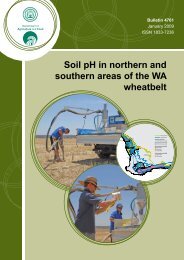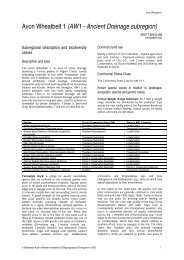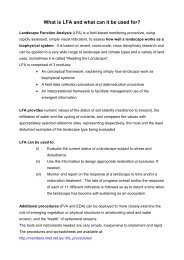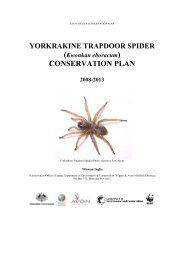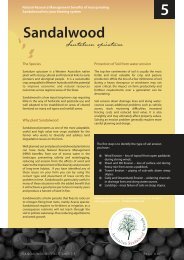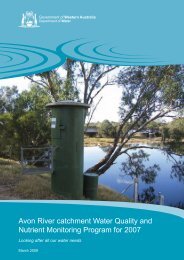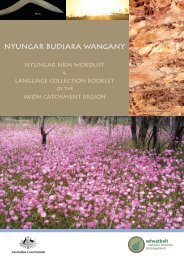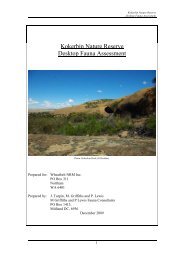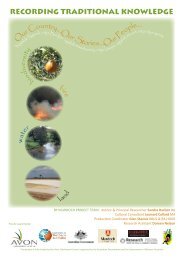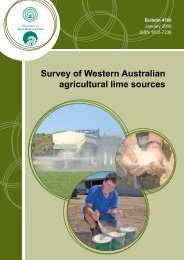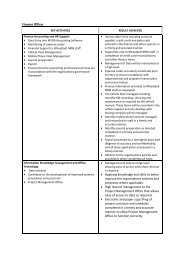Tree-Stem Trapdoor Spider (Aganippe castellum) - Wheatbelt NRM
Tree-Stem Trapdoor Spider (Aganippe castellum) - Wheatbelt NRM
Tree-Stem Trapdoor Spider (Aganippe castellum) - Wheatbelt NRM
You also want an ePaper? Increase the reach of your titles
YUMPU automatically turns print PDFs into web optimized ePapers that Google loves.
Ground disturbance or other operations which may have a direct or indirect impact onthe habitat or hydrology of known A. <strong>castellum</strong> population will require anEnvironmental Impact Assessment (EIA) to ensure that the species is not adverselyaffected. A pre-disturbance survey to determine the presence / absence of A.<strong>castellum</strong> in habitat that may reasonably be expected to contain an A. <strong>castellum</strong>population is encouragedEncouraging landowners / managers to conserve populations occurring on theirproperties is critical to the protection of these populations. When a new population isidentified on private property, the land owner will be contacted in person by DECstaff to discuss the management needs of the A. <strong>castellum</strong> populations as well as anyconcerns the owner may have. A letter will be provided to the land owner as a formalnotification of the presence of the population and a request to advise DEC of anychange in ownership.Working closely with landowners will improve the capacity to identify and addressany land use related threats.Where the land manager is a local or state government authority, the letter will requirethe agency to implement measures to ensure that the population will not be adverselyaffected by land use. These measures will include advising DEC of any land use thatmay impact on the survival of the population.The DEC provides advice on the location and protection of threatened species andcommunities to telecommunication, water and power providers to ensure that theseareas are managed as Environmentally Sensitive Areas (ESA). DEC will ensure thisadvice includes information on the relatively immobile nature of these fauna species.The DEC is responsible for assessing notifications of intent to clear under the clearingof native vegetation provisions of the Environmental Protection Act 1986. Thisprocess considers the potential impact of the proposed work on threatened faunaspecies.9



